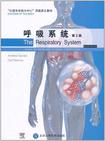呼吸系统
出版时间:2011-4 出版社:北京大学医学 作者:(英)戴维斯//穆瑞斯 页数:171
内容概要
“以器官系统为中心”的医学教学模式是国际医学教育的趋势。本系列书是世界著名医药卫生出版集团爱思唯尔公司出版的一套“以器官系统为中心”的医学基础课程教材。该套教材第1版出版后受到世界各地许多医学院校的欢迎,并被多家进行“以器官系统为中心”教学的医学院校选定为教材。第2版根据第1版出版后教师和学生的反馈意见,结合医学知识的更新进行了全新修订。在编写内容上,该系列教材强调基础与临床的整合。每一章节都是围绕着一个临床病例展开,通过对病人问题的呈现以及解决过程引出对相关知识的探究,从而使与器官系统结构、功能以及疾病相关的重要的基础医学知识得到了完善的整合。在版式安排上,图框中的病例资料与正文中的医学知识完美匹配,一步一步地激起读者的求知欲望。本册为《呼吸系统》。
作者简介
作者:(英国)戴维斯(Andrew Davies) (英国)穆瑞斯(Carl Moores)
书籍目录
1 INTRODUCTION
Introduction
What is respiration?
The need for respiration
Diffusion in respiration and the circulation
Timing in the circulation and respiration
Basic science of respiration
Drugs
2 STRUCTURE OF THE RESPIRATORY SYSTEM,RELATED TO
FUNCTION
Introduction
The upper airways
The intrathoracic airways
Blood vessels
Pulmonary hypertension
The lymphatics
The nerves
Gross structure of the respiratory system
Pleurisy
The diaphragm and chest wall
How breathing is brought about
Embryology
Air-conditioning
Metabolic activity
Metabolism of circulating biologically active
substances
Non-respiratory functions
3 ELASTIC PROPERTIES OF THE RESPIRATORY SYSTEM
Introduction
Intrapleural pressure (Ppl)
Static lung compliance (CL)
The effect of disease
The physical basis of lung compliance
4 AIRFLOW IN THE RESPIRATORY SYSTEM
Introduction
How airflow is brought about
The nature of airflow
The major determinant of flow - radius
Airways resistance and obstructive pulmonary disease
The clinical situation
Sites of airways resistance
Asthma and airways smooth muscle
Bronchomotor tone
Pharmacological treatment of asthma
Clinical definitions
Bronchitis and mucus
Emphysema and radial traction
Intrapleural pressure and cough
Clinical tests for changes in resistance
Work of breathing
5 VENTILATION OF THE RESPIRATORY SYSTEM: THE IMPORTANCE OF
ITS LACK OF UNIFORMITY IN DISEASE
Introduction
Spirometric abnormalities in disease
Uneven distribution
Dead space.
Alveolar dead space in disease
The Bohr equation
Factors affecting physiological dead space
Alveolar ventilation and respiratory exchange
The alveolar gas equation
Distribution of inspired gas
Other factors influencing distribution
6 GAS EXCHANGE BETWEEN AIR AND BLOOD:DIFFUSION
The path from air to tissue
Lung disease and diffusion
Fick's Law of Diffusion
Measuring transfer factor
Treating diffusion difficulties
Carbon dioxide and other gases
7 THE PULMONARY CIRCULATION: BRINGING BLOOD AND GAS
TOGETHER
The functions of the pulmonary circulation
The anatomy of the pulmonary circulation
Matching ventilation and perfusion
Distribution of blood flow through the lungs
Regional differences in ventilation in the lungs
Ventilation/perfusion matching and its effect on blood
O and CO content
Shunt
8 CARRIAGE OF GASES BY THE BLOOD AND ACID/BASE BALANCE
Introduction
Oxygen transport
Dissolved oxygen: do we really need Hb and why
keep it in red cells?
Carbon dioxide transport
Acid-base balance
9 CHEMICAL CONTROL OF BREATHING
Introduction
Oxygen lack
Carbon dioxide excess
10 NERVOUS CONTROL OF BREATHING
Introduction
The rhythm generator
Pattern of breathing in COPD
The respiratory 'centres'
The medullary groups
Conscious control of breathing
Respiratory muscle innervation
Neuromuscular disorders
Vagal reflexes
Dyspnoea
Other reflexes
11 LUNG FUNCTION TESTS: MEASURING DISABILITY
Introduction
Spirometry
Flow measurements
Plethysmography
Lung mechanics
Transfer factor (diffusing capacity)
Blood gases
Gas washouts
Exercise testing
Challenge tests
Appendix: some basic science
Glossary
Index
章节摘录
版权页:插图:Above the larynx, the airway is held open by the actions ofairway-dilating muscles, including genioglossus and palat-opharyngeus. Were it not for the actions of these muscles, theupper airway would collapse, particularly in the supine posi-tion. During sleep, the tone in skeletal muscles throughoutthe body is reduced and this applies equally to the muscleswhich keep the upper airways patent. It is therefore normalfor the upper airway to become narrowed during sleep. In patients with OSA, the airway narrowing is morepronounced than normal and leads to periods of airwayobstruction. There are a number of reasons why this hap-pens, but obesity is the most important. It is thought that inobese patients, the pressure exerted by the fat in the necktends to cause the airway to collapse. When the tone in thegenioglossus and palatopharyngeus is reduced, as duringsleep, airway obstruction may result. The airway may remain obstructed for only a few seconds,or it may be well over a minute before the patient takeshis next breath. During this time, the patient may becomehypoxic and will begin to make vigorous efforts to try andbreathe against the obstructed airway. Furthermore, he willbecome increasingly aroused from his sleep. Eventually, heregains the tone in his airway-dilating muscles and the airwayobstruction is relieved. (Patients do not usually waken.) Afterthe obstruction has been relieved, ventilation resumes and thepatient's sleep deepens. This leads to a reduced tone in theairway-dilating muscles and the cycle starts to repeat itself. Although obesity is probably the most important fac-tor leading to OSA, there are other predisPos!ng factors.These include anatomical variations predisposing to airwaynarrowing, such as enlarged tonsils, airway tumours andabnormalities of the mandible. Sedative drugs, includingalcohol, may also predispose to sleep apnoea, probably byaffecting sleep patterns and by reducing muscle tone. Asmall number of cases of OSA may be explained by abnor-malities of neuromuscular function.
编辑推荐
《呼吸系统(第2版)》:The Systems of the Body series has established itself as a valuable resource for allmedical and other health science students following system-based courses. In thissecond edition all the volumes have been updated to take into account feedback fromreaders of the first edition. Each volume continues to present the core knowledge ofbasic science and clinical conditions that medical students need, offering an integratedview of the system unavailable from standard textbooks. An expanded selection ofself-assessment material is available from www.studentconsult.com/gopaperlessThe Respiratory System explains basic science in the context of clinical casehistories, giving the reader an integrated understanding of the system and itsmajor diseases.Introduction、Structure of the respiratory system, related to function、Elastic properties of the respiratory system、Airflow in the respiratory system、Ventilation of the respiratory system: the importance of its lack of uniformity in disease、Gas exchange between air and blood: diffusion、The pulmonary circulation: bringing blood and gas together、Carriage of gases by the blood and acid/base balance、Chemical control of breathing、Nervous control of breathing、Lung function tests: measuring disability。
图书封面
评论、评分、阅读与下载
用户评论 (总计8条)
- 纸质不错,只是仔细看了下才知道是北大授权的影印版!
- 英语原版,借鉴
- 是全英文的,印刷很好,学医的同学不要错过了.
- 还不错,适合提高外语能力 。就是运输不佳书受损了
- 英语编写,很有帮助
- 比较好,实用性强,质量也不错
- 内容比较细 用心看看
- 书是好书,半价买的,亚马逊实在
推荐图书
- 教材解析 英语三年级(上)
- 盗墓笔记第四卷蛇沼鬼城
- 小学教材解析四年级英语
- 阿笨猫
- 物理测试与评析AB级
- 简明文言字典
- 修辞理论与修辞哲学
- 数学测试与评析A、B级(全1册)
- 化学能力训练与提高
- 牛津英语教学参考
- 化学测试与评析A、B级(全1册)
- 民国两兄弟
- 数学测试与评析A、B级
- 物理能力训练与提高(全1册)
- 英语(牛津上海版)
- 钟书金牌 最新达标金卷 新课标 英语N版 二年级上(配上海教材)
- 物理测试与评析AB级
- 小学生智慧训练营 让你的心胸更宽广
- 幼儿园多元开发领域课程 美术 幼小衔接(上)
- 2-3岁中国幼儿潜能阶梯科学开发 智力 开发 第1阶 赠送益智贴纸
- 中国化工集团公司班组长安全培训通用教材
- 大连考古文集
- 法律视域下沿海经济带建设研究
- 高中新课标
- 物理能力训练与提高
